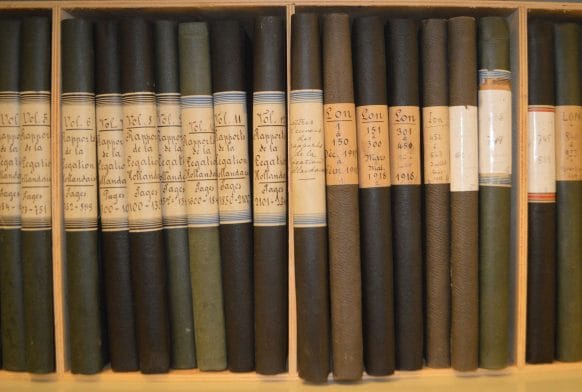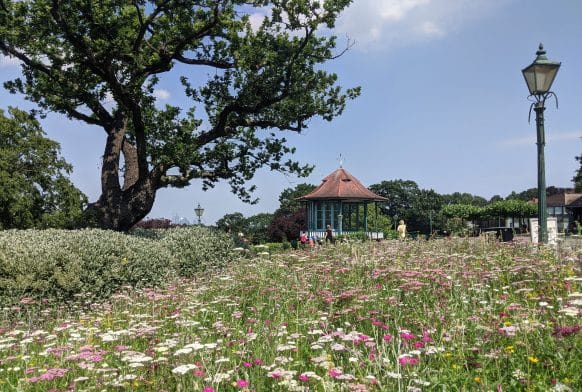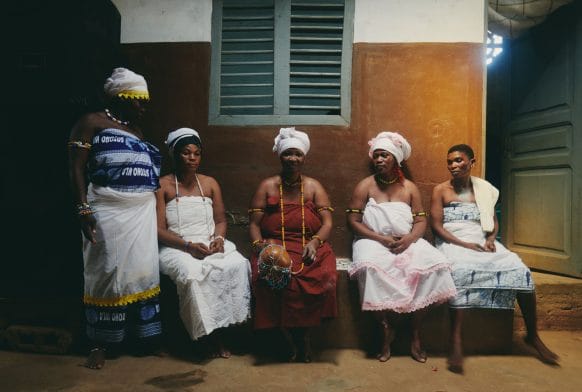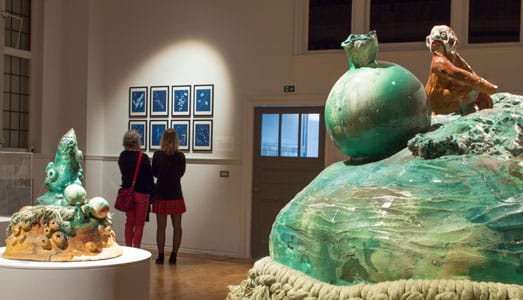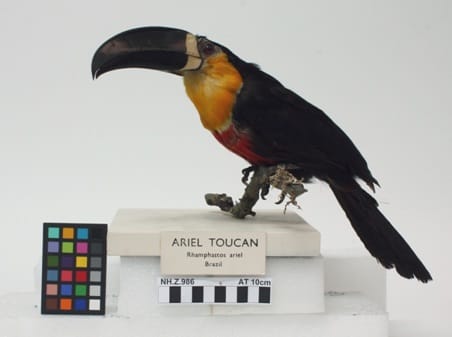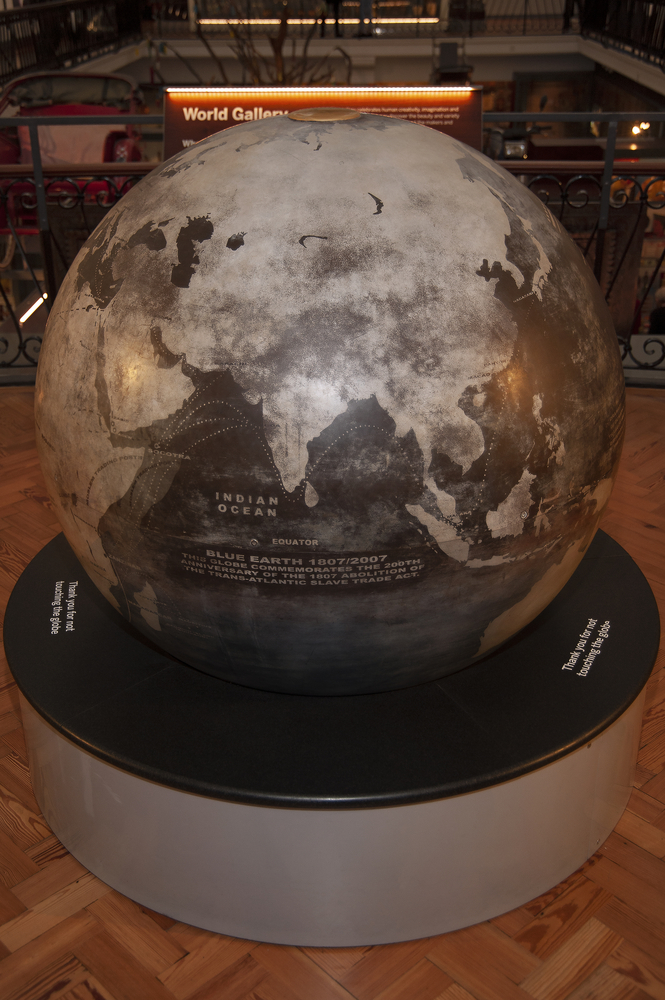
A metal sculpture in the form of a large engraved metal globe which can spin about its axis, entitled 'Blue Earth 1807-2007', and made by Taslim Martin in 2007 to commemorate the abolition of the transatlantic slave trade.
In March 1807, the British Parliament formally abolished any kind of slave trading activities within its territories. Though the salve trade continued unabated outside these areas, this parliamentary decision eventually contributed to the ending of the slave trade. To mark the bicentenary of this important historical event, the Horniman Museum and Gardens commissioned the artist Taslim Martin to create a permanent memorial in the African Worlds gallery looking at the movement of people from West Africa to the destination ports in the Americas. 'Blue Earth 1807-2007' is an iron globe inscribed with the now iconic 18th century image of the slave ship 'Brookes'. The use of dark steel to construct the sculpture is suggestive of the history and dark metal which is associated with the slave trade. On this globe, Martin traces the routes along which enslaved Africans were transported to the New World, as well as the movement of the products of enslaved labour. Over time, the iron sculpture darkens in colour and, like our 'memories' of the slave past, the images and text inscribed on the globe fade. The work creates an engaging and thought-provoking memorial to the abolition of the transatlantic slave trade.













